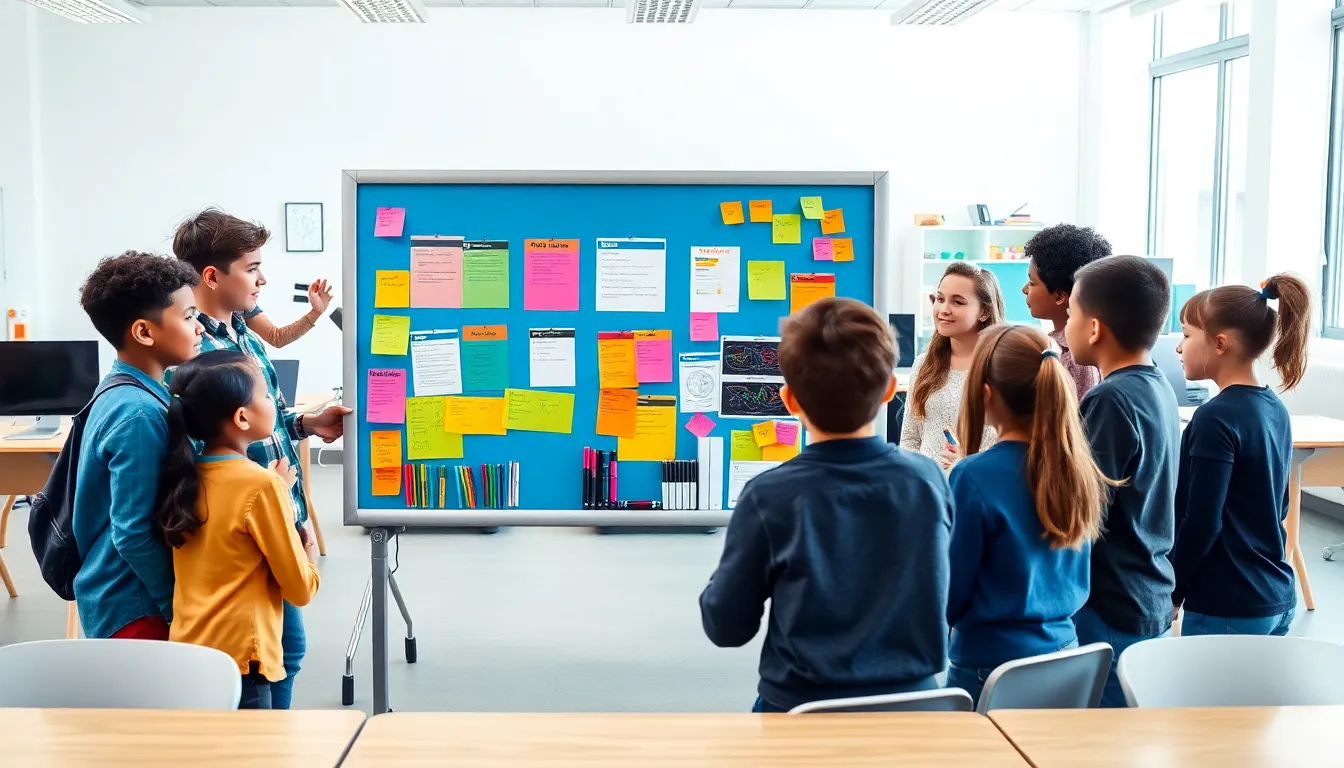Picture this: a funky, versatile tool that not only makes learning interactive but also fun. Enter the fumbleboard, a magical space where students engage, collaborate, and maybe even drop things on purpose (oops.). If you want to tumble into a world of creativity and effective learning, read on. This article dives deep into what a fumbleboard is, its features, and how to make the most of this educational gem.
fumbleboard start on

Key Features of a Fumbleboard
Fumbleboards boast several features, making them ideal tools for fostering a collaborative learning environment.-
- Interactive Surface: The main attraction is the board’s surface, often designed for writing, drawing, or pinning materials. This flexibility promotes active participation.
-
- Portability: Many fumbleboards are lightweight and easy to move, allowing educators to rearrange classroom layouts quickly.
-
- Versatile Materials: Fumbleboards can accommodate various learning materials, from sticky notes to magnetic tiles, catering to different activities.
-
- Durability: Constructed from strong materials, these boards can withstand regular use and remain functional in bustling classroom settings.
Benefits of Using Fumbleboards
Using a fumbleboard in educational settings brings numerous benefits:-
- Enhanced Collaboration: Students are more likely to engage with their classmates as they gather around the board to share ideas and solutions. They can brainstorm together, fostering teamwork skills.
-
- Improved Retention: Engaging with materials on a fumbleboard can enhance memory retention by involving multiple senses. Students don’t just memorize: they interact, making learning more meaningful.
-
- Flexibility in Learning Styles: Whether a student is a visual learner, auditory learner, or kinesthetic learner, fumbleboards cater to all styles. Interactive elements make study sessions more effective.
-
- Immediate Feedback: Teachers can provide on-the-spot guidance, correct misunderstandings, or prompt deeper thought without the delay of formal assessments.
-
- Fun Factor: Who doesn’t love a bit of fun while learning? The playful nature of fumbleboards keeps students engaged and excited about their education.
Getting Started with Fumbleboard
Ready to jump into the world of fumbleboards? Here’s a quick guide on how to get started:-
- Select the Right Space: Choose a location in the classroom that encourages collaboration but also allows for easy visibility from all students.
-
- Gather Materials: Prepare various items like markers, sticky notes, magnets, and anything else that sparks creativity. Have supplies on hand to help immediate engagement.
-
- Set Guidelines: Establish expectations for classroom behavior around the fumbleboard. Encourage respectful interaction and explain how to use it safely and productively.
-
- Incorporate Activities: Plan lessons that actively involve the fumbleboard. Use it for brainstorming sessions, group projects, or even quick quizzes.
-
- Encourage Student Ownership: Allow students to lead activities or propose uses for the fumbleboard. This empowerment can boost interest and investment in the learning process.
Common Mistakes to Avoid
While fumbleboards present fantastic opportunities, there are common pitfalls to mind:-
- Overloading the Board: Filling the fumbleboard with too much information can overwhelm students. Keep it organized and concise to aid understanding.
-
- Neglecting Interaction: Simply having a fumbleboard isn’t enough. Actively help discussions and interactions: otherwise, it can lose its effectiveness.
-
- Ignoring Maintenance: Regularly check the board and materials for wear and tear. A functional, clean board encourages student engagement and enthusiasm.
-
- Limiting Activities: Using the fumbleboard for the same type of activities can become monotonous. Mix up approaches and conditions to keep it interesting.
Advanced Techniques for Fumbleboard Users
For those already familiar with fumbleboards, consider these advanced techniques:-
- Digital Integration: Pair your fumbleboard with digital tools. Use apps or online platforms that allow students to create digital representations of ideas, supporting a hybrid learning experience.
-
- Rotating Roles: Assign roles to different students during activities, such as note-taker, presenter, or facilitator, to deepen engagement and foster leadership skills.
-
- Themed Fumbleboards: Create themed boards focusing on specific subjects or projects. For instance, a literature-themed fumbleboard could feature character maps, quotes, and themes, visually organizing complex ideas.
-
- Feedback Loop: Use the fumbleboard as a feedback tool, students can post questions or topics they’re struggling with, and the board can serve as a group problem-solving space.


